Abstract
The public health aspects of the use of wastewater in agriculture and the effects of the drip irrigation method on the contamination of vegetables were studied. The method used was to simulate enteric microorganisms' dissemination by contaminated irrigation water in the field. The vegetables were irrigated with an effluent inoculated with a high titer of traceable microorganisms: poliovirus vaccine and a drug-resistant Escherichia coli. The dissemination of the marker organisms in the field was followed, and the effects of certain manipulations of the drip irrigation method on the contamination of the crops by the effluent were examined. It was shown that drip irrigation under plastic sheet cover with the drip lines placed either on the soil surface or buried at a depth of 10 cm significantly reduced crop contamination from inoculated irrigation water even when massive doses of bacteria and viruses were used. The microbial contamination was found to persist in the irrigation pipes and in the soil for at least 8 and 18 days, respectively. The data indicate that the recovery of the marker organisms was affected by soil texture and environmental conditions.
Full text
PDF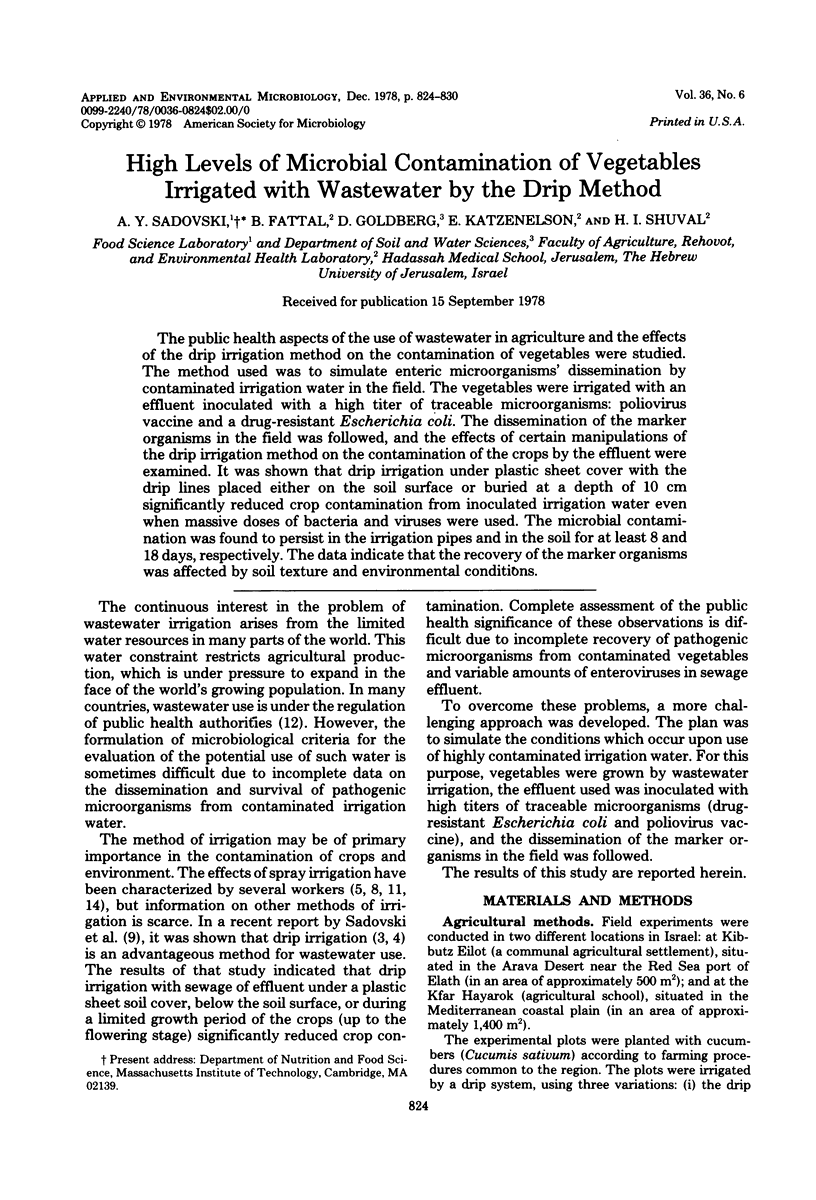
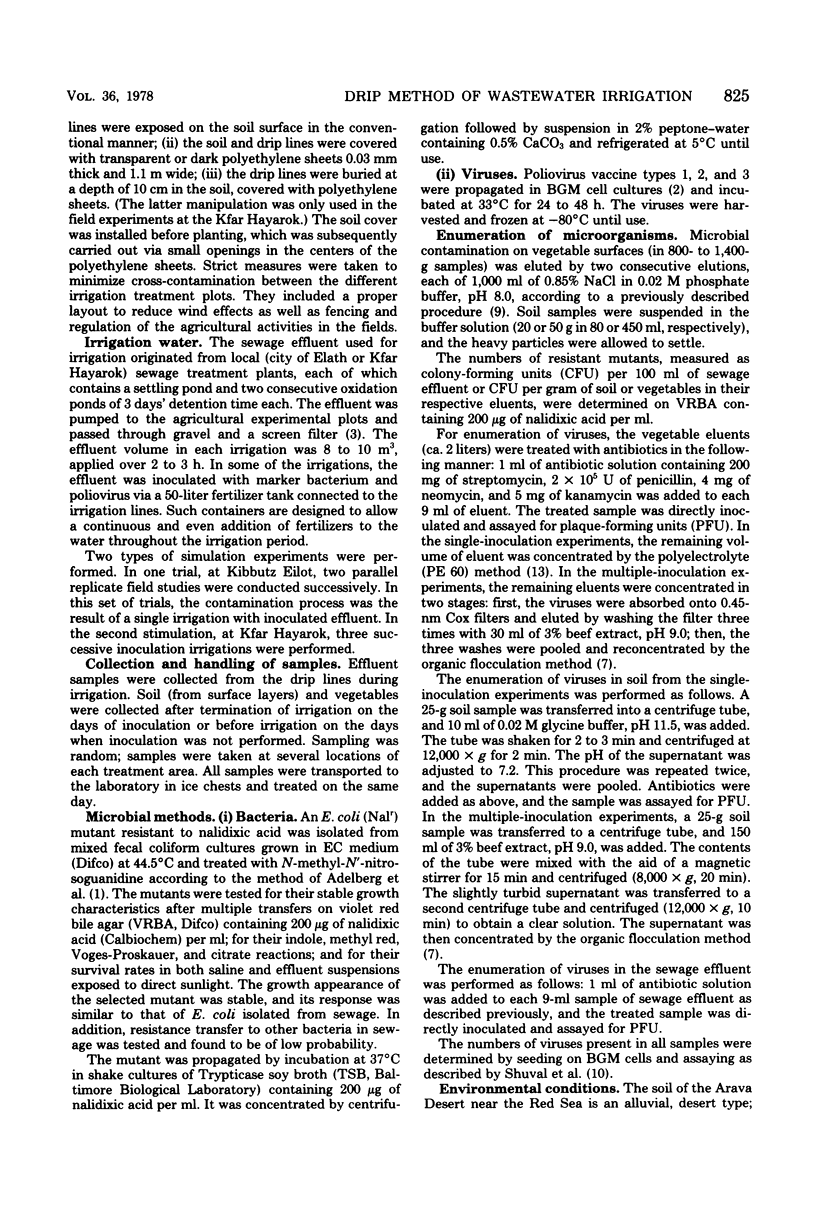
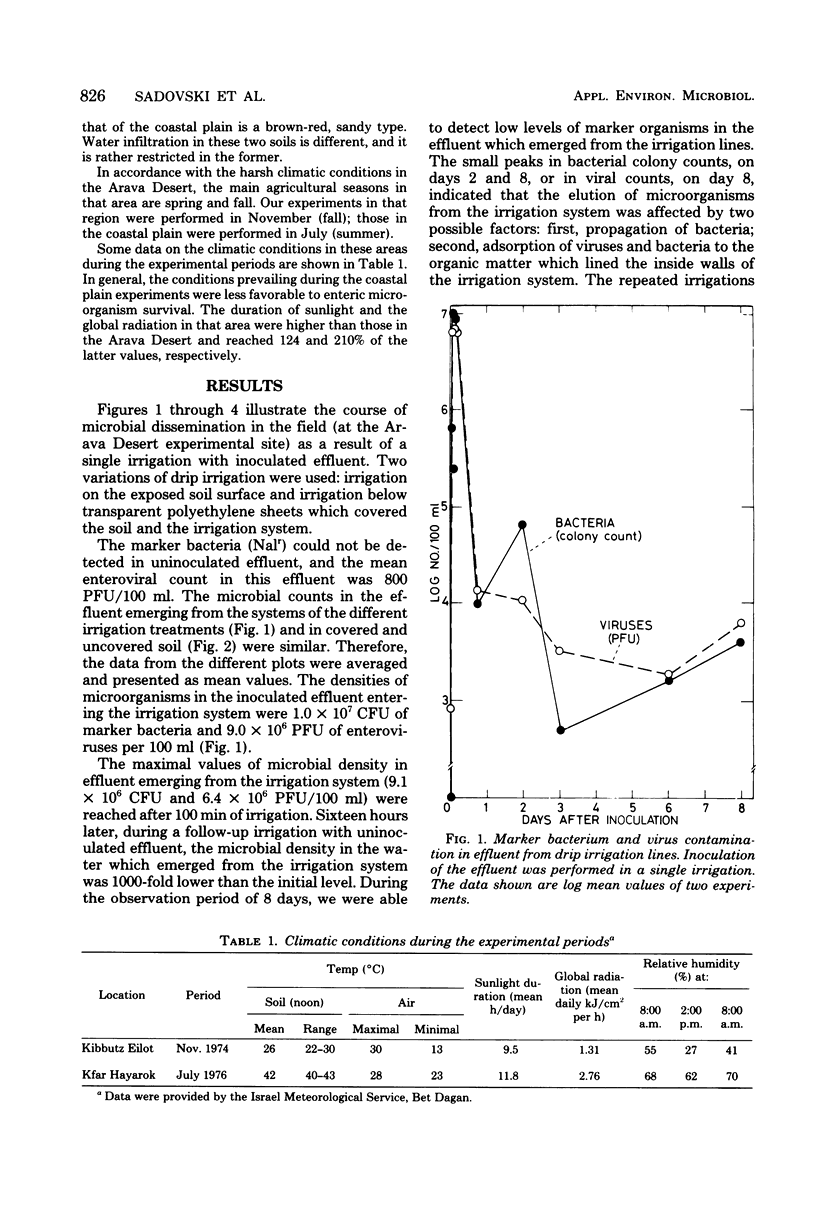
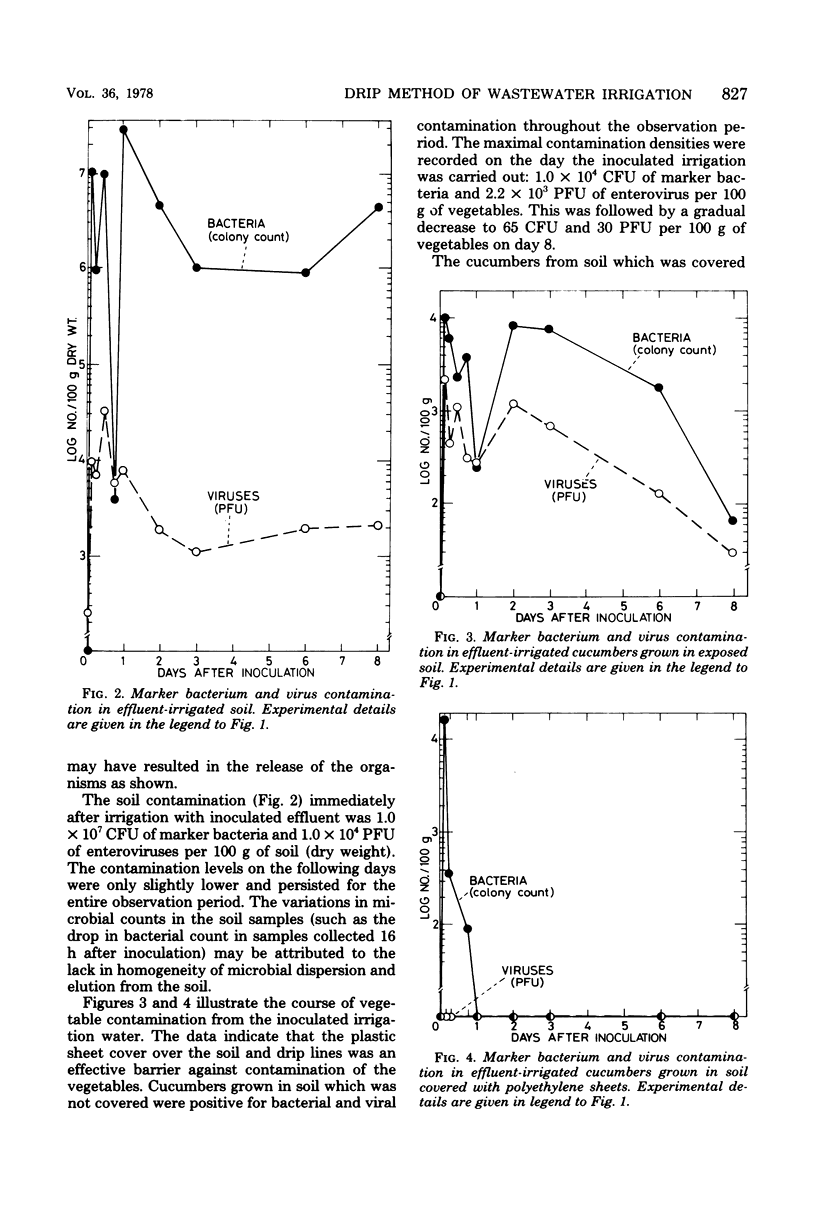
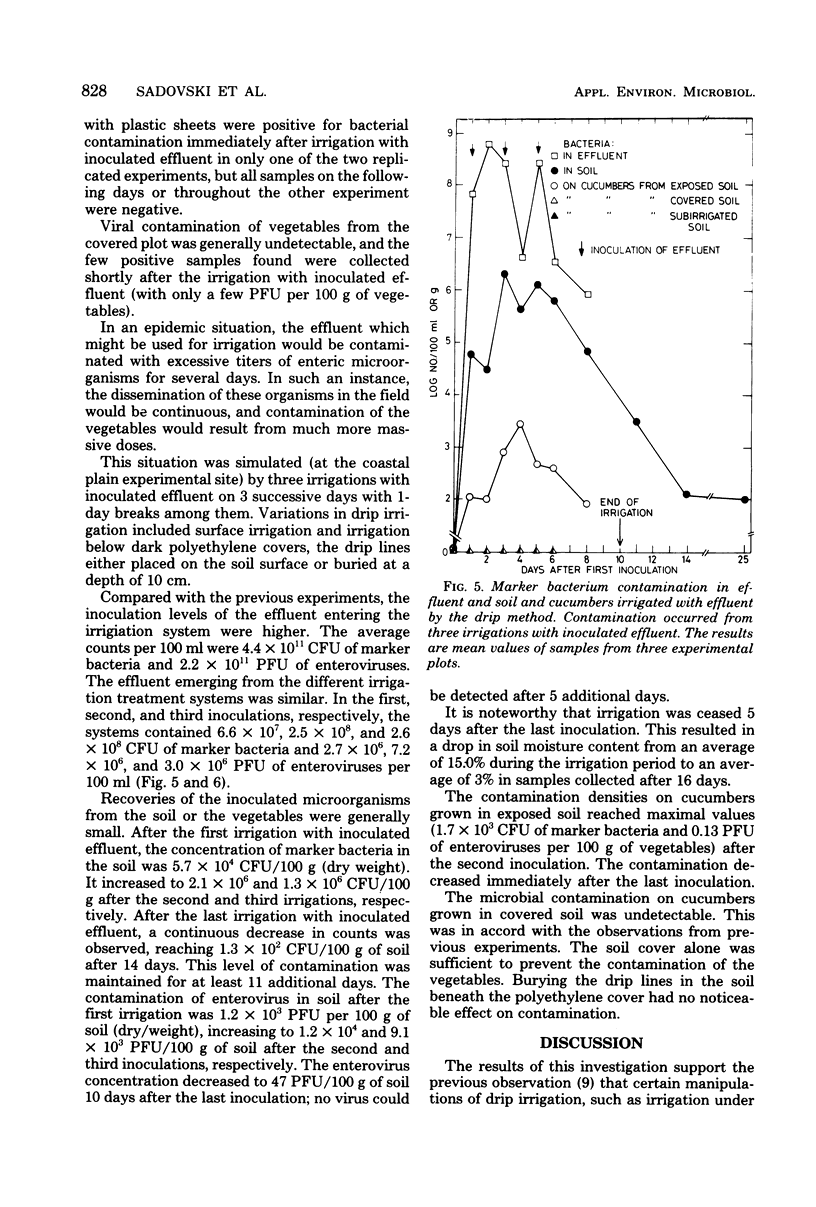
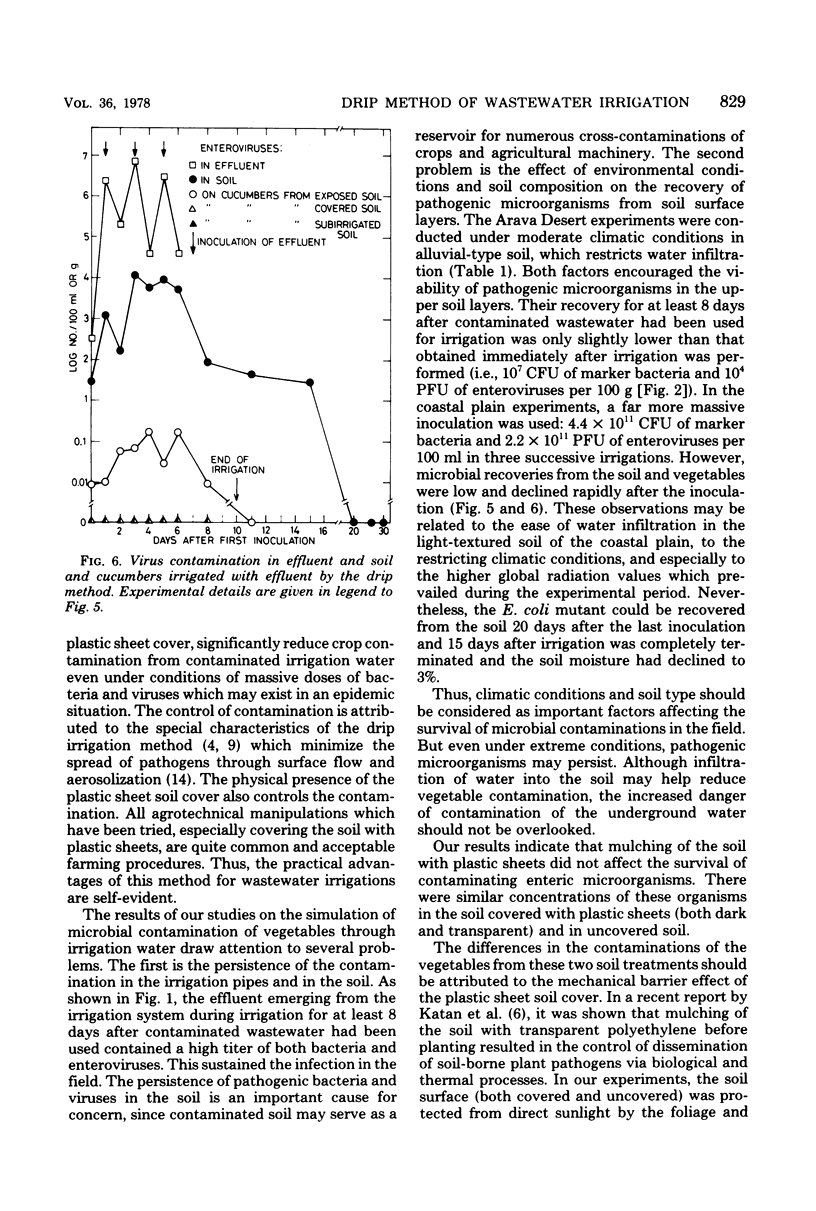
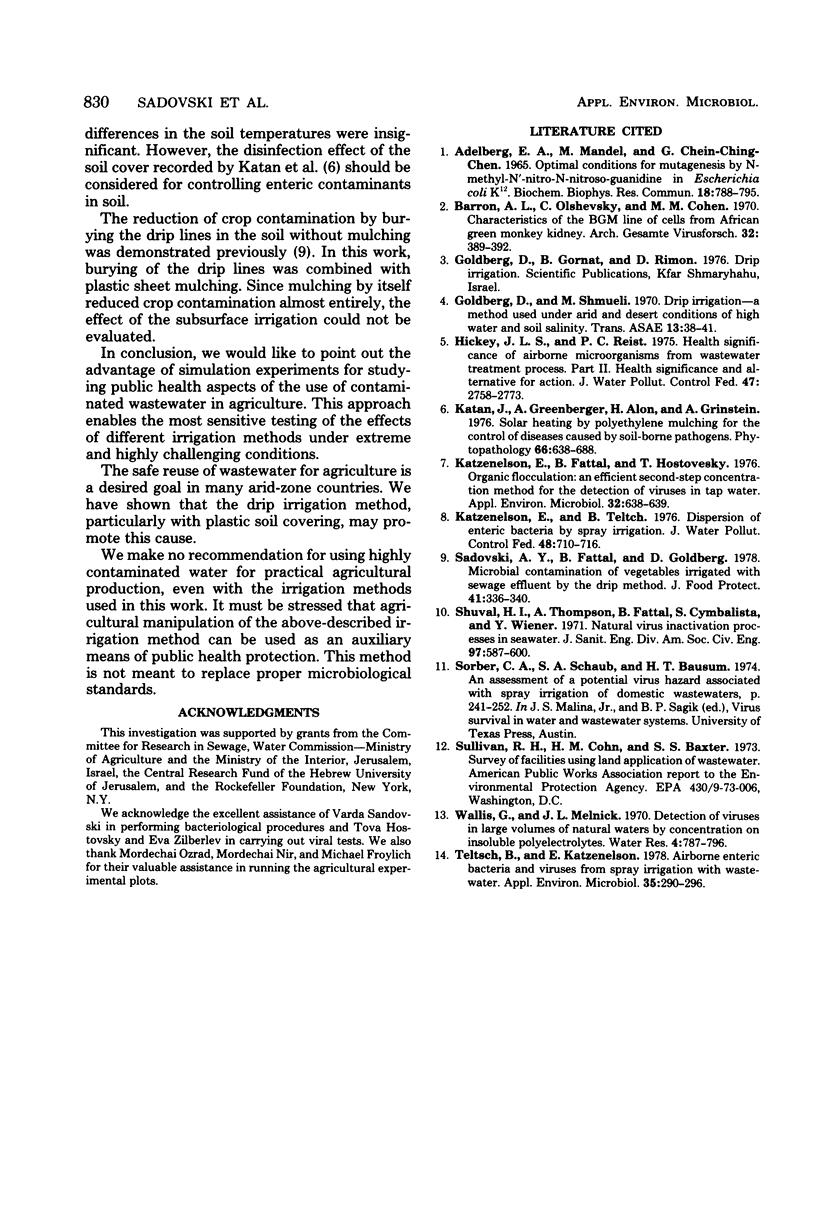
Selected References
These references are in PubMed. This may not be the complete list of references from this article.
- Barron A. L., Olshevsky C., Cohen M. M. Characteristics of the BGM line of cells from African green monkey kidney. Brief report. Arch Gesamte Virusforsch. 1970;32(4):389–392. doi: 10.1007/BF01250067. [DOI] [PubMed] [Google Scholar]
- Hickey J. L., Reist P. C. Health significance of airborne microorganisms from wastewater treatment processes. Part II: Health significance and alternatives for action. J Water Pollut Control Fed. 1975 Dec;47(12):2758–2773. [PubMed] [Google Scholar]
- Katzenelson E., Fattal B., Hostovesky T. Organic flocculation: an efficient second-step concentration method for the detection of viruses in tap water. Appl Environ Microbiol. 1976 Oct;32(4):638–639. doi: 10.1128/aem.32.4.638-639.1976. [DOI] [PMC free article] [PubMed] [Google Scholar]
- Teltsch B., Katzenelson E. Airborne enteric bacteria and viruses from spray irrigation with wastewater. Appl Environ Microbiol. 1978 Feb;35(2):290–296. doi: 10.1128/aem.35.2.290-296.1978. [DOI] [PMC free article] [PubMed] [Google Scholar]


